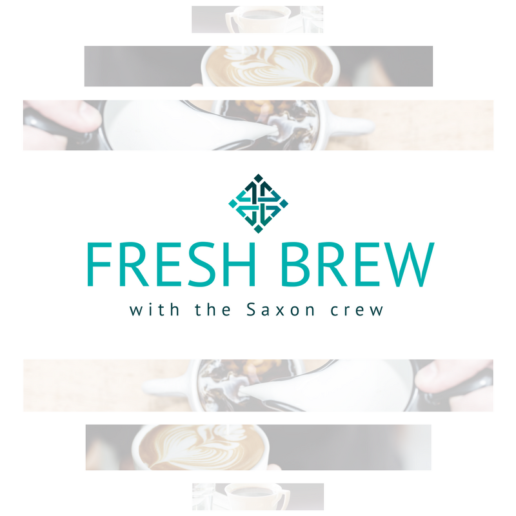5 signs you need to up your life insurance coverage
Your life insurance policy should change as your life changes. In this article, Steinmeyer points out five signs everyone should watch out for.
Depending on the type of life insurance policy you have, you could be covered anywhere between one year and the rest of your life, depending on if you have term or permanent life insurance. But if you’ve had a policy for a while, it might no longer be enough.
As your life changes, your insurance needs change with it. Depending on events that have happened and how your mindset has evolved since you first bought a policy, it may be a good idea to make sure you have enough coverage. Here are five signs to watch out for.
1. You’ve had a child. The cost of raising a child through age 17 is $233,610, according to 2015 data from the U.S. Department of Agriculture—and that’s not even mentioning college costs if you plan to help out.
If you’ve recently had an addition to your family, your spouse or partner may not be able to afford those costs if something were to happen to you. That’s especially the case if you’re the financial breadwinner.
2. You’ve bought a new home. Two of the top five reasons people get life insurance is to cover mortgage debt and to pay for home expenses, according to the 2018 Insurance Barometer Study by Life Happens and LIMRA.
If you have a family, the last thing you want is for them to be forced out of their home because they can’t keep up with the payments. So, if you just bought your first home or a new home with a bigger mortgage, make sure you have enough coverage to at least make the monthly payments.
3. Your income has increased dramatically. Two-thirds of people who own life insurance bought it to replace lost income if they were to pass away, according to the same Barometer Study. If you’ve recently gotten a significant raise or your income has increased steadily since you last bought insurance, check to make sure your insurance coverage is still enough to replace it.
4. Your lifestyle has changed. While income increases often come with lifestyle changes, it’s also possible to get a lifestyle upgrade after you’ve paid off debt or improved your cash flow in some other way. If you notice that you’ve been spending more per month than you were a year or two ago, your current life insurance policy may leave a gap between its coverage and your loved ones’ needs.
5. You’re thinking about your estate planning. Another top-five reason people get life insurance is to transfer wealth or leave an inheritance. As you get older, you may start thinking more about what kind of legacy you want to leave behind.
If you’ve been focused on other life insurance needs up to this point, it might be time to take another look to see if you would owe any estate taxes upon your death or what other expenses your estate might incur. You may also consider whether you want to leave any money behind for your children or a favorite charity.
If one of these things has happened to you and you’re not sure if you need to increase your coverage, use a comprehensive life insurance calculator to see how your needs have changed.
In most cases, you won’t be able to increase the coverage on your current policy. Instead, you’ll buy a new one to supplement the first. You can do this by reaching out to your insurance professional or shopping around to see if another insurer might offer you a better deal.
Whatever you do, take the time every once in a while to determine whether your life insurance coverage is still enough to take care of the people you love.
SOURCE: Steinmeyer, F. (16, July 2018) "5 signs you need to up your life insurance coverage" (Web Blog Post). Retrieved from https://www.lifehappens.org/blog/5-signs-you-need-to-up-your-life-insurance-coverage/
15 employee benefits on the rise
A number of benefits, other than employer-sponsored health insurance and retirement plans are on the rise. Read this blog post to learn more.
Employer-sponsored health insurance and retirement plans are always a vital part of the employee benefits conversation. But a number of other benefits — think wellness and perks that promote work-life balance — are becoming table stakes as employers look to attract and retain talent in a tightened labor market. Here are 15 of the employee benefits that are on the rise, according to the Society for Human Resource Management’s recently released annual benefits survey.
Health savings accounts
Paid parental leave
The availability of paid parental leave increased significantly between 2016 and 2018 for every type of parental leave, according to SHRM. Paid maternity leave increased from 26% in 2016 to 35% in 2018, and paid paternity increased from 21% to 29%. Meanwhile, adoption (20% to 28%), foster child (13% to 21%) and surrogacy (6% to 12%) leave also increased in the last two years.
A number of large employers have added or enhanced paid parental leave programs in the last year. Dollar General, TD Bank and Unum are among the companies that added parental leave benefits for employees, while IBM, TIAA and Walmart are among those that expanded their programs.
Company-organized fitness competitions/challenges
Standing desks
Standing desks are one of the fastest-growing employee benefits: The percentage of employers offering standing desks to workers increased from 20% in 2014 to 53% in 2018. In the last year alone, the benefit increased 8 percentage points.
Research indicates long hours of sitting are linked to obesity, diabetes, heart disease and cancer, so employers are looking for benefits to help combat the problem.
Critical illness insurance
Telecommuting
CPR/first aid training
Acupressure/acupuncture medical coverage
Onsite stress management programs
Lactation rooms
Casual dress benefits
Service anniversary awards
Spot bonuses
Life insurance
Paid time off to volunteer
10 things you didn’t know about life insurance
What do you hear when they mention life insurance during open enrollment? Don't put your loved ones at risk. Here are 10 things you may not have known about life insurance.
Life insurance blah blah blah. Is that what you hear when someone mentions it as part of your new job’s employee benefits round-up or when you see something about it on TV or social media? Not to worry: we’ve got the low-down on what you need to know. And it’s really not as overwhelming (or underwhelming) as you might think.
1. It’s part of a sound financial plan. You know about savings, you know about retirement. You might know a bit about investments and long-term financial planning for your health and happiness. And life insurance helps with planning for your loved ones’ long-term health and happiness, especially those who depend on your income, in case something were to happen to you.
2. There are different kinds of life insurance. In addition to employment-based life insurance (which typically only lasts as long as your employment at your job), there’s term and permanent life insurance.
Term life insurance: You typically pay lower premiums for term life insurance, but your coverage is just for a specified amount of time, say 20 years, for example. At the end of the term, your insurance coverage ends.
Permanent life insurance: With permanent life insurance (whole, universal, variable) you typically pay higher premiums in the short term, but then these policies generally allow you to accumulate cash value over time. Your coverage is designed to last as long as you continue to pay premiums.
3. Life insurance is surprisingly affordable for most people. Sure, there are forms of life insurance that get pricier the more features you add on to it, and the price goes up if you’re a smoker or dealing with health problems. But most people think life insurance costs about three times as much as it really does, according to the Insurance Barometer Study by Life Happens and LIMRA. Just as a general guide, a healthy nonsmoking 30-year-old man can get a $250,000 20-year level term policy for about $16 a month.
4. Key life events are often the best time to get on board. Getting married? Having kids? Changing jobs? Bought a house? Significant life events are often the time you become most aware of the need for life insurance—and on that note…
5. You can change your life insurance. Perhaps you have a life insurance policy that your parents got for you when you were a baby. Perhaps you have a term policy from when you bought your house but now you have a bigger family and you’re concerned about getting them all through college. Or perhaps you want to bump up your coverage because your overall cost of living has changed. And on *that* note …
6. You may well need more coverage than you think. Sometimes people think life insurance is to pay off their own debts and funeral expenses. But a key advantage of having life insurance is to ensure that the people who depend on you will be OK with their ongoing and future financial needs if something happens to you. Need help figuring this out how much? Go to this online calculator: www.lifehappens.org/howmuch.
7. Life insurance pays out quickly. Because life insurance doesn’t get tangled up in estate claims, it generally pays out quickly, sometimes in days or weeks, usually inside of a month.
8. Life insurance proceeds are generally tax-free. Compare this to, say, crowdfunding options like “GoFundMe” that have become so popular yet create tax consequences for the people they’re meant to help (to say nothing of fees and the lack of guaranteed benefit). It’s also helpful when you’re trying to create an inheritance for a beneficiary.
9. Life insurance protects your family, but only if you let it. Keep your premiums paid up and your beneficiaries up to date, and the door with your agent open so that your loved ones know who to call if they need to. Keep your paperwork with your other vital documents.
10. Life insurance can be more than just life insurance. Using “riders,” or an addendum to a life insurance contract, or even a specific kind of policy, life insurance benefits can become “living benefits,” money you can access before you die, or use to pay for long-term care, as two examples.
If you still need help getting a handle on all this, talk to an agent. They can help you understand the ins and outs and the best policy for your budget and needs. Because of course—the most important thing to know about life insurance is that it’s there to help the people you love the most.
SOURCE: Mosher, H. (29 June 2018) "10 things you didn’t know about life insurance" (Web Blog Post). Retrieved from https://www.lifehappens.org/blog/10-things-you-didnt-know-about-life-insurance/
How to motivate millennials to participate in retirement savings
Why aren't millennials participating in retirement plans? In this article, Zito explains why and how you can motivate your millennial employees to participate.
Millennials comprise one-third of the U.S. labor force, making them the single-largest generation at work today, according to Pew Research Center. But they don’t appear to be functioning as full-fledged members of the workforce just yet — at least when it comes to participating in benefit plans.
The National Institute on Retirement Security found that two-thirds of millennials work for employers that offer retirement plans, but only about half of that group participates. That means just one-third of working millennials are saving for retirement through employer-sponsored plans.
The culprit for such low participation originates primarily with eligibility requirements. Millennials are more prone to disqualifying factors like minimum hours worked or time with the company — products of being relative newcomers to the workplace and spending the early parts of the careers in a deeply challenging labor market. The passage of time will hopefully help relax these eligibility limitations.
But there are other headwinds bearing down on millennials that could be holding them back from plan participation, and which present an opportunity for plan sponsors to demonstrate value to the largest working generation. For one thing, millennials have earned the most college degrees as a share of their generation, according to the Center for Retirement Research at Boston College, all while tuition costs have continued to outpace inflation. The resulting financial burden is compounded by the fact that millennials are earning less so far in their careers, despite their education gains, than older generations were earning at their age.
It’s important for sponsors to figure out how to enroll more millennials, and not just because it will generate goodwill. Boomers will continue to roll assets out of their plan accounts as they retire. The flight of their outsized share of plan assets will leave a smaller pool to share plan costs. Increased millennial engagement can offset this drawdown.
Plan design that gives due consideration to the rise of millennials should consider how to help with their financial needs and play to their strengths.
Harness millennial tech savvy
Growing up immersed in an electronic and interconnected environment reduces the learning curve that millennials might face in using planning tools. Simple offerings like a loan payment calculator or retirement savings projection interface can make a profound difference on the path to financial preparation.
The flipside to millennials’ willingness to tinker is that they tend to over-scrutinize their investment mix. TIAA found that millennials are three times as likely as boomers to change their investment allocation amid a market downturn — typically a decision that ends in regret. The compulsion to de-risk tends to strike after the worst of the damage is done, leaving investors ill-prepared for the ensuing recovery.
Solutions like target-date funds can remove the need to think about allocations altogether, so millennials can focus on more effective factors like retirement savings or loan repayment rates and stretching for their full matching contributions.
Provide an education benefit umbrella
Compound interest — the accelerant that makes saving and investing for retirement over several decades so effective — works in a similar way against borrowers that are slow to repay their loans. This is an acute problem for millennials, but it doesn’t stop with them. Almost three-fifths of 22 to 44-year-olds have student debt, and they’re joined by more than one-fifth of those over 45-years-old.
Employer-sponsored student loan repayment assistance can take a variety of forms. It can be as simple as directing participants to enroll for dedicated loan payments, and can extend all the way to helping them refinance at a better rate or consolidate multiple loans.
The education benefit umbrella can also cover tuition reimbursement programs for employees that want to continue their education but are hesitant to spend the money. These programs can also serve employee retention goals as they’re typically offered with a payback period if workers leave shortly after being reimbursed.
Any program that lowers employee financial stress will likely help improve productivity. From a practical standpoint, workers have more disposable income — and feel wealthier — once they’ve vanquished their loans.
Being an advocate in helping employees accomplish that goal has obvious benefits for organizations that are seeking to retain members of the country’s largest working generation.
SOURCE: Zito, A (9 August 2018) "How to motivate millennials to participate in retirement savings" (Web Blog Post). Retrieved from https://www.benefitnews.com/opinion/motivating-millennials-to-participate-in-retirement-savings
10 everyday things that cost more than term life insurance
Many people don’t purchase life insurance because they think it’s too expensive. Read on to find out which everyday items cost more than term life insurance.
Adults and parents worry. We worry about our family’s health, safety, financial security and future, but more families need to put their money where their heart is by buying term life insurance. (This is the most affordable type when initially purchased and provides protection for a specific period of time or the “term”.) However, the issue isn’t a matter of hypocrisy, but a lack of research and financial literacy. According to a Life Happens and LIMRA study from this year, 65% of households have not purchased life insurance because they think it’s too costly.
To show that this is a common misconception, the study asked Americans to estimate the cost of a 20-year, $250,000 level term life insurance policy for a healthy 30-year-old male. Eight in 10 people overestimated the cost, saying it would be $400 a year, which is more than double its actual cost of about $160 a year or about $13 a month. Astonishingly, one in four thought it would cost more than $1,000 a year.
And just know that unless you have serious health issues, pre-existing conditions or high-risk hobbies that would likely necessitate high-risk insurance, getting affordable coverage is really straightforward.
How Much Is Life Insurance?
To put the true cost of term life insurance in perspective, here are 10 products or services that people regularly spend money on that cost more than a term life insurance premium would for a healthy 30-year-old at $13 a month.
- Food – According to the National Resource Defense Council, Americans waste about $529 per year, or $44 per month, on unwanted snacks and meals.
- Alcohol – According to the Bureau of Labor Statistics, the average American consumer spends 1% of their discretionary income on alcohol.
- Tobacco – For households with smokers, 14% of Americans’ incomes are spent on cigarettes.
- Gym Membership – The $30 per month you spend on a 24 Hour Fitness membership that goes unused could be better spent funding your life policy.
- Electronics – That new 55” LED TV that costs $800 could be used to cover about five years of term life premiums.
- Games – Video games average $50 per new release. Don’t you think your child would prefer to have financial security than a game he/she will play for a few months?
- Cars – Underspend on your next car purchase by $3,000 and over a six-year loan period with 0% APR, you will save $500 per year, or $40 a month.
- Gadget – Depending on which version you get, an iPad costs around $550 with tax, almost three and a half years of premium payments.
- Entertainment – A pair of movie tickets, popcorn, and a drink, totaling $25.
- Fashion – One pair of designer jeans costing $50 or more.
Saving money and funding your life insurance policy doesn’t have to make your life miserable. In fact, the average cost of life insurance is so small compared to your overall budget, that even small concessions such as minimizing waste and limiting frivolous purchases can open up your budget enough to buy a much-needed financial tool.
Ultimately, the peace of mind and pride of securing your family’s financial future will outweigh any temporary pleasure from a materialistic purchase.
Don’t wait to protect your livelihood. Have a chat with a specialist at Saxon Financial today by visiting this link.
Learn about the different types of life insurance here.
SOURCE: Dek, G. (15 June 2015) "10 everyday things that cost more than term life insurance" (Web Blog Post). Retrieved from https://www.lifehappens.org/blog/10-everyday-things-that-cost-more-than-term-life-insurance/
Everything benefits managers need to know about Generation Z
Generation Z is making their way into today's workforce. Yes, they have similarities to millennials, but they have plenty of differences as well. Read this blog post to learn more.
Just when you thought you had finally figured out the millennial generation, there’s another young cohort of professionals entering the workforce. Sure, they’ve got some similarities to tech-focused millennials, but they have plenty of their own attitudes and opinions about money, relationships and, of course, work and benefits. Meet Generation Z.
Generation Z was raised in a post-9/11 world, following the dot-com boom and bust and during the midst of the Great Recession. There’s no doubt that these world events have colored the way they think and the way they work. Generation Z is a large cohort of about 72.8 million people and about 25% of the population. It’s a generation that employers will need to understand to create meaningful relationships. Here’s what you need to know.
They’re true digital natives. Generation Z was born between the 1995 and 2010, which makes them the first truly digital native generation. By the time they were heading off to Kindergarten, the internet had reached mainstream popularity and Mark Zuckerberg had already launched Facebook across college campuses.
Like many of us, Generation Z is rarely without their phones. But unlike your older colleagues, Generation Z may be more connected than ever — documenting their days on Instagram Stories and Snapchat, and messaging friends by text and other messaging platforms.
However, they’re also a relatively private bunch. Rather than broadcasting their lives on Facebook (like their parents, aunts, uncles and grandparents), they favor networks that allow for privacy. Snapchat snaps disappear, as do Instagram Stories. Gen Z also gravitates toward apps like Whisper, an anonymous social network for sharing secrets.
Here’s the takeaway for HR pros: Rather than seeing this as a barrier to communication, look at it as an opportunity. Try using text message reminders for open enrollment deadlines or creating a Slack channel for benefits communication, in addition to email and paper updates.
They’re seeking financial security. Generation Z grew up during the Great Recession, during which they may have seen their parents lose their jobs or deal with serious financial hardships. Because of this, Generation Z is focused on financial stability.
Unfortunately, many Gen Zers may join your company drowning in student loan debt from college. Consider offering benefits that help them get out of debt and begin saving for the future. Student loan debt repayment benefits with platforms like SoFi or Gradifi provide appealing avenues to pay off debt faster. You can also promote tax-deferred savings programs such as a 401(k) or health savings accounts to minimize their tax liability and maximize savings opportunities. These benefits may also appeal to millennials struggling with student loan debt and the prospect of saving for retirement — all while they start families.
Financial wellness benefits are attractive to all of your employees — Gen Z included. Consider partnering with local banks or credit unions to provide other savings options and financial education. Make this education appealing to everyone by providing it in different formats — in-person for anyone to attend, as well as on-demand webinars or Skype meetings for those who appreciate a more interactive experience.
Gen Z wants to actively participate. Generation Z is the most connected generation yet; they’re used to Googling an answer before you can finish your question or chatting with their friends throughout each day.
This hyper-connectedness lends itself to more interactive workplace meetings. Keep your Gen Z employees engaged and garner feedback by incorporating polls into your meetings, or creating recordings and presenting to computers and smartphones using a platform like Zeetings, Presentain or Mentimeter.
Whereas millennials were known for their interest in collaborating with each other, Gen Z wants to own their work a little bit more and compete against colleagues. Use this to your advantage to introduce gamification into your programs. Platforms such as Kahoot cannot only help you create some fun competition, but it can improve information retention.
They have a surprising communication preference. We’ve established that Generation Z is a hyper-connected cohort. But research uncovered one surprise about this generation’s preference for feedback: they prefer to be in-person. Use this knowledge to mentor your managers who will deliver feedback, and use it to make your benefits more appealing, too. For example, a confidential advocacy program with phone, email and chat options can be a great source for Gen Zers who want more information on their benefits.
While not everyone in this age group will conform to these attitudes and feelings, it can be helpful to pull back the curtain and understand how this generation could be different from millennials, Gen Xers and baby boomers.
One sure-fire way to engage employees in voluntary benefits
Do you want to increase employee engagement when it comes to voluntary benefits? Read on to learn how to increase employee engagement.
Whether your employees are 22 or 62, they need to plan for the unexpected. A sudden injury or illness can dramatically derail their financial well-being and retirement readiness. As the responsibility for healthcare costs shifts to employees, employers are taking steps to help their employees by offering voluntary benefits, like critical illness and accident insurance.
The hitch, however, is that many employees aren’t taking advantage of these benefits.
There are many reasons for this: Employees may not have much appetite for voluntary insurance benefits after choosing medical benefits. They may not understand what’s being offered or how it is relevant to their lives. Further, if they haven’t been close to someone who has dealt with a catastrophic health issue, they may not grasp how destabilizing that is and how voluntary benefits can help at a difficult time.
So how do employers keep employees from hitting the snooze button on voluntary insurance benefits, and wake them up to how these benefits can help with their overall financial wellbeing?
One way is to understand what employees might need given their life stage, family situation or other variables. To help employees sort this out, here are few scenarios of how voluntary benefits could help employees — with fictional people based on a combination of our experiences with customers.
Leaving nothing to chance
Scott tends to be a worrier. His friends joke that he’s a 45-year-old man in a 25-year-old body. He is in the “adulting” stage of life — getting settled in a career, figuring out his personal life, and living on a salary that’s just a few steps up from entry-level. Scott worries about what might happen if he gets sick or injured and can’t meet his portion of his high-deductible plan. He’s also open about the fact that he doesn’t want to move back in with his parents. Unlike most of his friends, he’s also thinking decades ahead and is already contributing to a 401(k).
Scott wants it all — financial protection now and for the future. Based on what he’s seen happen to friends and colleagues close to his age, he chose critical care and accident insurance coverage during benefits enrollment at work. These options will help cover unexpected costs if an unexpected covered event does happen, and the cost won’t take a big chunk out of his paycheck thanks to his employer’s group rate. What’s more, the benefit is tax-free if he ever needs to use it, and can help keep him independent, and out of his parents’ house.
For employers, these kinds of benefits can help mitigate employees’ financial stressors so they can focus on wellness and getting back to work if an unexpected health issue strikes.
Weekend warriors and thrill-seeking hobbies
Catherine is a marketing manager who is married with two children. She is 44 and in the “balancing” stage of life, between “adulting” and “planning.” Her main concern when looking at voluntary insurance benefits was her husband, who likes high-thrill, risky sports. While Catherine tends to shy away from motorcycles and extreme sports, she is a bit of a weekend warrior since it’s hard to find time to exercise during the week. Her kids are also active and perpetually on the go, whether playing sports or just running around with the neighborhood kids.
Once Catherine learned about voluntary benefits, it was a no-brainer to choose accident insurance for her entire family. While she hopes that her family will only have fun — and avoid injury — doing what they all enjoy, she knows they have to be prepared for anything.
Employers can help employees choose the right benefits by encouraging them to think about how they and their families spend their leisure time, including sports, hobbies, adventure travel or any other activities.
Taking account of a family history of cancer
Meet Justin. He’s 55, married, and has a daughter. He is at the “planning” stage of life — following “adulting” and “balancing.” While Justin is healthy, his family history of cancer is a concern when he considers his future. He’s seen family, friends and colleagues struggle with the costs of a serious illness. He also is acutely aware of saving enough for retirement as he has only 10-15 more years in the workplace, during which he can save.
For Justin, his life stage, family history of cancer and concern for his family’s physical and financial well-being led to his purchasing decisions. To help mitigate financial setbacks if he should become ill, Justin purchased critical illness insurance. He also purchased critical illness and accident coverage for his wife and daughter.
From an employer point of view, emphasizing that employees should consider their family and individual medical history — and how an adverse event could impact them and their families — is a compelling way to make voluntary benefits relevant.
Making it real for employees
Many employers want to help their employees choose the right benefits for their specific needs to protect their financial well-being now and for the future. Showing how needs change with age and lifestyle sheds more light on how voluntary insurance can provide benefits for covered events that will help mitigate financial losses and reduce stress.
Digital technology is making it easier than ever to engage employees across channels with easily digestible but important information. Employers can set up “decision tools” that help employees make choices, offer videos that bring different situations to life, develop app-based calculators, and tell stories about how voluntary benefits can help them and their families during an unexpected illness or injury.
Employees have a lot on their minds. The key to making voluntary benefits real is to show employees why they matter and how to choose the right products. What many employees don’t know is that employers are working hard behind the scenes to offer benefits tailored to their workforce. This is an opportunity for employers to personalize the experience and demonstrate to employees that they truly care.
Grubka, R. (27 June 2018) "One sure-fire way to engage employees in voluntary benefits" (Web Blog Post). Retrieved from https://www.employeebenefitadviser.com/opinion/engaging-employees-in-voluntary-benefits?tag=00000151-16d0-def7-a1db-97f024870001
Fresh Brew with Abby Graham
Welcome to our brand new segment, Fresh Brew, where we will be exploring the delicious coffees, teas, and snacks of some of our employees! You can look forward to our Fresh Brew blog post on the first Friday of every month.
“It’s not that hard to be well!”
Abby has been in the insurance, health and wellness industry for over 12 years. Prior to joining Saxon, she spent the last 7 years working for Humana/HumanaVitality. She is passionate about making sure members understand their medical and wellness benefits as well as how to maximize their potential.
An active member and board member of the Cincinnati Modern Quilt Guild, Abby enjoys sewing and quilting in her spare time. She also enjoys spending time with her husband, Jon and her sons, Carter and Cameron.

Favorite Brew
Coffee
“Coffee! You really can’t go wrong with a solid cup of coffee.”
“Coffee Emporium in Hyde Park is the place to go.”
Favorite Snack
Reese’s Pieces Cookie
Reese’s Pieces Cookies are Abby’s favorite snack to enjoy with a cup of coffee.
Improve workplace fitness by focusing on the collective "we"
Do your employees participate in workplace wellness programs? Try involving the collective "we" to increase involvement. Continue reading to learn more.
Workplace wellness programs are implicitly focused on the individual: biometric screenings, individual incentives, gym member reimbursements. This approach can leave employees feeling less than motivated to take part because, even though the programs focus is on the individual, by no means does it make the program personalized.
As workplace wellness programs rapidly improve to meet the expectations of today’s workers, it’s important to remember the value of accountability and what a culture of health can do to create a workplace committed to wellness solutions.
Since wellness programs have traditionally focused on the individual, oftentimes employees never know if their colleagues are participating in any of the programs being offered. Bring it into the light by giving your employees a program they want to talk about, while still keeping it personalized. The collective “we” are not only more likely to try a wellness program, but we are also more likely to stick with it, if we know our peers are also partaking.
The power of sharing with your peers
We all know writing down a goal gives you a much higher chance of achieving it, but research from the Association for Talent Development says someone is 65 percent more likely to achieve a goal if the goal is shared with another person. Why? Because it creates accountability.
We are in the day and age of a social media frenzy, and, it’s cross-generational. We share everything we do and spend a lot of our time concerned with what our friends, family and co-workers are doing through these social platforms. Wellness practitioners can and should be taking advantage of this, especially as you build your culture of health.
To find the right wellness solution for your company or client, look for solutions that are social and easy to use. If the company as a whole has buy-in, or even a few internal advocates, word-of-mouth can be incredibly powerful. Whether that is around the water-cooler at work, on employees’ personal social media channels, or within the work intranet, create opportunities for employees to talk about your program and encourage them to use it. We know when an employee knows a few of their coworkers are planning to attend yoga or kickboxing on a Tuesday evening, they are much more likely to sign up and actually go.
These “wellness relationships” help not only build stronger bonds at work, but they also help you create and maintain healthy habits. You want your employees to engage with your wellness solution, so encourage them to share and become part of the “solution” themselves. At the end of the day, workplace wellness solutions are there to help everyone get healthier and stay that way, but they have to use the program.
More than just an incentive
We have spent at least a decade looking at incentives and how we align them to solve problems with low participation in our wellness program, when we should have focused on building a program that empowers our employees and puts them in the driver’s seat. I’m not suggesting you stop incentivizing your employees, but I do suggest you measure what it is you are rewarding. If it can’t be measured you may as well burn the money you are investing.
Remember, your employees are the real reason your program will sink or swim. Take care of your employees and encourage them to be and find their healthiest selves. Empower them in the process and give them choice in how, when and with who they participate in your wellness program and let them become your wellness solution.
Maurer E. (18 July 2018). "Improving workplace wellness by focusing on the collective 'we'" (Web Blog Post). Retrieved from https://www.benefitspro.com/2018/07/18/improve-workplace-wellness-by-focusing-on-the-coll/.
Point-of-sale wellness: How health plans are cashing in
Many health plans are starting to offer preventative approaches to help promote health and reduce skyrocketing healthcare costs. In this article, Vielehr talks about one approach, the point-of-sale wellness method.
Health care costs continue to skyrocket, and payers are constantly looking for ways to keep their populations healthier and to reduce these costs. Payers looking for more effective strategies to improve health and wellness for members should be aware of the new preventative approaches that more health plans are offering.
One such method that health plans are deploying to engage members is point-of-sale wellness, a type of incentive program that encourages members to actively make healthier purchases and lifestyle choices. As point-of-sale wellness becomes more prevalent among health plans, human resource managers and benefits brokers should understand how these programs work to best determine if they would be a valuable option for their employees and clients.
What is point-of-sale wellness?
Point-of-sale wellness is all about helping health plan members make smart, healthy purchasing decisions when they’re in a retail store or pharmacy. According to the Henry J. Kaiser Family Foundation, the average consumer visits their doctor 3.1 times per year. This same consumer will visit his or her favorite retailers multiple times per week. This presents the perfect opportunity for actionable engagement. It is often too easy for individuals to make impulsive decisions that favor cheaper care items or junk food that provides instant gratification but lead to an unhealthy lifestyle in the long run. Empowering consumers in these moments before checking out at the register with the understanding — and more importantly, the financial incentive — to make informed, smarter choices can lead to a healthier lifestyle and reduced health care costs. In short, the goal is to help individuals prioritize health and wellness at retail point of sale.
There are numerous ways that health plans can achieve this goal. One of the most common is by providing members with prepaid cards that are loaded with funds and discounts for the purchase of over-the-counter (OTC) items such as vitamins, diabetes care items and medications for allergies or cold and flu symptoms. The key component of these specialized prepaid cards is that they can be restricted-spend cards. In other words, they cannot be used to purchase any items that the health plan members want; they can only be used to purchase items off a curated list of products.
Under this arrangement, all parties, from the individual to the health plans and retailers, benefit. With a restricted-spend prepaid card in hand, an individual is rewarded for making purchases that contribute to a healthier lifestyle, while reducing health care costs both for themselves and the health plans administering the cards. In the meantime, the retailers partnering with the health plans to make point-of-sale wellness possible enjoy the opportunity to build long-term customer relationships with the health plan members using the cards.
Point-of-sale wellness in action
Point-of-sale wellness can be customized to be as general or specific as a health plan needs. For example, a health plan that supports a high number of new parents on a regular basis may offer a prepaid card designed specifically to assist members with newborn children. The first years of an infant’s life are among the most expensive from a health care perspective. More health plans are starting to offer new parents prepaid cards that are loaded with funds and discounts for items such as OTC medications, baby food and formula, diapers, strollers, car seats or thermometers. This opens an easier path for new parents to do basic at-home diagnostics and keep their babies’ health monitored so costly trips to an emergency room or urgent care center are not needed as often.
Payers that offer health and wellness programs to assist new parents in their populations can consider engaging health plans that offer these types of prepaid cards. Having a healthier child has the added benefit of reducing stress on the parents, which means they are in a better position to continue performing in the workplace.
Financial incentives for healthier choices
Most wellness programs are focused on informing participants of the best ways to support a healthier lifestyle, but that is only half of the equation. Point-of-sale wellness goes one step further to ensure participants are empowered from a financial perspective to make smarter purchasing decisions while shopping for daily care items. Businesses and benefits brokers who want to provide their employees and clients the best opportunities to live a healthier lifestyle should consider engaging health plans that prioritize these prepaid card incentives into their offerings.
Vielehr, D. (19 July 2018). "Point-of-sale wellness: How health plans are cashing in" (Web Blog Post). Retrieved from https://www.benefitspro.com/2018/07/19/point-of-sale-wellness-how-health-plans-are-cashin/













